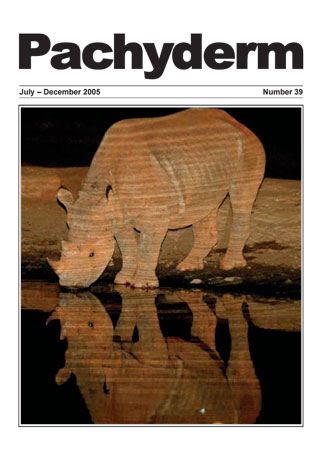Risk of crop raiding by elephants around the Kakum Conservation Area, Ghana
Abstract
This Augsut 2000-September 2002 study monitored crop damage by elephants in the vicinity of Kakum CA. The Conservation Area, comprised of about 370 sq kms formerly known as Kakum NP and Attandanso FR, has a population of about 220 elephant. The forest in the protected area is a fragment of the lowland forest the once occupied much of southwestern Ghana. (Adjewodah, et al. 2005: Barnes, et al. 2003) The CA is almost completely surrounded by agricultural land under both subsistance and commerical cropping. 10 study sites of one sq each were randomly chosen around the periphery of the CA. A local villager was trained and hired to monitor and record elephant caused damage to crops. In 2001 a total of 213 fields were monitored. 55 of these fields suffered damage and a 120 incidents were recorded. It was apparent that distance from the CA boundary, size of field, type and number of crops in the field of crop, and isolation of the field all played a role is whether of not the field was raided. Maize and cassava were the most commonly raided crops and plantains were third. Smaller and more isolated fields close to the park were most often raided, however elephant also seemed to be attacted and larger farms with many crops in the fields. Recommendations suggest 'a farmer could drastically reduce risk by moving away from the park boundary, joining other farmers in a cluster, limiting farm size and growing fewer kinds of crops. This study was part of the training programme for officer interested elephant biology and management.
Downloads
Published
How to Cite
Issue
Section
License
Copyright (c) 2005 Richard F. W. Barnes, Emmanuel M. Hema, Awo Nandjui, Mildred Appiah Manford, Umaru-Farouk Dubiure, Emmanuel K. A. Danquah, Yaw Boafo

This work is licensed under a Creative Commons Attribution-NonCommercial 4.0 International License.




